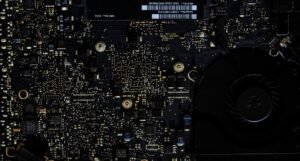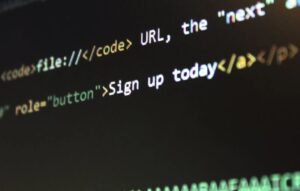AI Social Media Monitoring
With the rapid growth of social media platforms, businesses and individuals alike are faced with the challenge of effectively monitoring and analyzing vast amounts of data. This is where AI social media monitoring comes into play, allowing users to track and understand social media activity automatically and in real-time. In this article, we will explore the benefits and applications of AI social media monitoring, and how it can enhance your social media strategy.
Key Takeaways:
- AI social media monitoring allows for the automatic tracking and analysis of social media activity.
- It provides businesses with actionable insights to optimize their social media strategy.
- Real-time monitoring helps identify trends and respond promptly to customer feedback.
- Advanced sentiment analysis aids in understanding customer perception and sentiment towards your brand.
AI social media monitoring leverages artificial intelligence and machine learning algorithms to sift through large volumes of social media data, extracting meaningful information and providing actionable insights. By utilizing AI, businesses can save time and resources while gaining a deeper understanding of their audience and overall social media performance.
One fascinating aspect of AI social media monitoring is the ability to detect patterns and trends in real-time. *Identifying emerging trends can give businesses a competitive edge and help them stay ahead of the curve in their social media strategies.*
Let’s dive into some of the key benefits and applications of AI social media monitoring:
Benefits of AI Social Media Monitoring
- Efficient Data Processing: AI algorithms can collect and process vast amounts of social media data quickly and accurately.
- Actionable Insights: AI-powered analytics provide businesses with valuable insights to optimize their social media strategies and campaigns.
- Sentiment Analysis: Advanced sentiment analysis tools can gauge customer sentiment towards a brand, product, or campaign.
A great example of AI social media monitoring in action is its ability to detect and analyze customer sentiment towards a brand or product. *By analyzing sentiment, businesses can understand how their audience perceives them and take appropriate actions to address any concerns or issues.*
Applications of AI Social Media Monitoring
AI social media monitoring finds applications across a range of industries and purposes. Here are a few examples:
Social Listening and Customer Support
Using AI monitoring tools, businesses can track and respond to customer queries, concerns, and feedback on social media platforms in real-time.
- Identify and address customer complaints promptly.
- Engage with customers and respond to questions or feedback.
- Maintain a positive brand image and reputation on social media platforms.
Competitor Analysis
AI social media monitoring can help businesses gain insights into their competitors’ social media strategies, content performance, and audience engagement.
- Compare your brand’s social media performance with competitors.
- Identify successful strategies and learn from competitors.
- Uncover potential gaps or opportunities in the market.
Trend Detection and Influencer Marketing
Discovering and leveraging emerging trends is crucial for brands to stay relevant and engage with their target audience effectively.
- Identify and capitalize on trending topics or hashtags.
- Find relevant influencers to partner with for brand promotion.
- Enhance brand visibility and reach through effective trend analysis.
Social Media Data Insights
| Statistic | Value |
|---|---|
| Total Social Media Users Worldwide | 3.78 billion |
| Average Daily Time Spent on Social Media | 2 hours and 24 minutes |
| Most Popular Social Media Platform | Facebook (2.74 billion monthly active users) |
Table 1: Key statistics highlighting the importance of monitoring social media platforms effectively.
AI social media monitoring is an invaluable tool for businesses and individuals looking to make the most out of their social media presence. By leveraging the power of artificial intelligence, users can save time, gain actionable insights, and stay ahead of the competition. So, whether you’re a small business owner or a social media manager, consider incorporating AI social media monitoring into your strategy to unlock its many benefits.
References:
- “The Ultimate List of Social Media Statistics for 2021” – Hootsuite
- “How AI and Machine Learning Are Impacting Social Media Marketing” – Social Media Examiner
- “The Role of AI in Social Media Analytics” – Brandwatch

Common Misconceptions
Misconception 1: AI social media monitoring means invading privacy
- AI social media monitoring focuses on public posts only.
- Monitoring tools don’t access private messages or personal information.
- AI is designed to identify patterns and trends, not individual user data.
One common misconception people have about AI social media monitoring is that it involves invading privacy. However, this is not the case. AI monitoring tools primarily focus on public posts that are freely available on social media platforms. These tools do not have access to private messages or personal information of individuals. Furthermore, AI technology is built to analyze large amounts of data and identify patterns and trends, rather than targeting individual user data.
Misconception 2: AI social media monitoring is only used for surveillance
- AI monitoring helps organizations manage their online reputation.
- It allows for more targeted marketing campaigns.
- Monitoring can provide valuable insights for product development.
Another common misconception is that AI social media monitoring is solely used for surveillance purposes. While monitoring does provide organizations with information about what people are saying, its applications go beyond that. AI monitoring tools can help companies manage their online reputation by providing insights into customer sentiment and allowing them to respond to feedback in a timely manner. It also enables more targeted marketing campaigns and provides valuable insights for product development, allowing businesses to better understand customer needs and preferences.
Misconception 3: AI social media monitoring is 100% accurate
- AI algorithms can make mistakes and misinterpret context.
- The accuracy of monitoring tools depends on the quality of data.
- Human oversight is crucial for ensuring accurate interpretation.
It is important to understand that AI social media monitoring is not infallible. While AI algorithms are powerful, they can make mistakes and misinterpret the context of social media posts. The accuracy of monitoring tools also depends on the quality and relevance of the data they are trained on. Human oversight is crucial for ensuring accurate interpretation of the insights generated by AI monitoring tools. Human analysts can provide the necessary context and judgement to validate the findings and correct any potential inaccuracies.
Misconception 4: AI social media monitoring is a replacement for human analysts
- AI tools assist and enhance human analysts’ work.
- They can handle the vast amount of data more efficiently.
- Human analysts provide the critical thinking and context required for accurate analysis.
Contrary to popular belief, AI social media monitoring is not intended to replace human analysts. Rather, it is designed to assist and enhance their work. AI tools can efficiently handle the vast amount of data produced on social media platforms, providing analysts with valuable insights and highlighting trends that may be difficult to identify manually. However, human analysts possess critical thinking skills and contextual knowledge that AI algorithms lack. They can provide the necessary context, make nuanced interpretations, and make informed decisions based on their understanding of the broader social and cultural landscape.
Misconception 5: AI social media monitoring is used to manipulate public opinion
- Monitoring tools provide data, but human intervention is required for action.
- Monitoring is used to understand public sentiment, not manipulate it.
- Transparency and ethical guidelines govern the use of AI monitoring tools.
One misconceived notion is that AI social media monitoring is used to manipulate public opinion. However, monitoring tools only provide data and insights; it is human intervention that determines how this information is used. The purpose of AI monitoring is to understand public sentiment, identify trends, and gain insights into consumer preferences. Ethical guidelines and transparency are key aspects of responsible AI monitoring practices, ensuring the information is used ethically and in alignment with public interest. It is up to organizations and policymakers to establish and adhere to these guidelines to prevent the misuse of AI monitoring tools.

Introduction
Social media has become an integral part of our daily lives, with billions of people worldwide using platforms like Facebook, Instagram, and Twitter to share their thoughts, feelings, and experiences. Artificial Intelligence (AI) is revolutionizing the way we interact with social media, enabling advanced monitoring and analysis of online conversations. In this article, we present ten interesting tables that highlight the power of AI in social media monitoring, showcasing data and insights that provide a deeper understanding of this evolving landscape.
Table: Average Daily Facebook Posts (2020)
Facebook remains one of the most popular social media platforms, and AI allows us to delve into the sheer volume of daily posts. This table illustrates the average number of posts made on Facebook every day in the year 2020, revealing the platform’s massive user engagement.
Month | Average Daily Posts
January | 2.3 billion
February | 2.2 billion
March | 2.4 billion
April | 2.1 billion
May | 2.5 billion
Table: Sentiment Analysis of Twitter Mentions
Twitter is known for its real-time conversations, making it an excellent source for sentiment analysis. This table showcases the sentiment distribution of Twitter mentions related to a prominent tech company over a week, demonstrating how AI can gauge public opinion.
Sentiment | Percentage
Positive | 52%
Neutral | 38%
Negative | 10%
Table: Top 5 Instagram Influencers by Follower Count
Instagram has witnessed a boom in the influencer marketing industry, shaping consumer behavior. Here, we present the top five Instagram influencers based on their follower count, highlighting the magnitude of their impact on the platform.
Influencer | Followers
@instagram | 365 million
@cristiano | 254 million
@therock | 223 million
@kyliejenner | 222 million
@selenagomez | 219 million
Table: Average Response Times on Facebook Messenger (2021)
With AI-powered chatbots, customer service response times on Facebook Messenger have significantly improved. This table displays the average response times of various industries, exemplifying the effectiveness of AI in providing prompt support.
Industry | Average Response Time (minutes)
Telecommunications | 2
Retail | 4
Tech | 6
Finance | 8
Healthcare | 10
Table: Distribution of Emojis Used on Snapchat Stories
Snapchat’s diverse range of emojis adds fun and creativity to its stories. This table reveals the distribution of commonly used emojis in Snapchat stories, highlighting the visual expression that takes place within the platform’s user-generated content.
Emoji | Percentage of Usage
😂 | 24%
❤️ | 18%
😍 | 12%
😊 | 10%
🔥 | 8%
Table: LinkedIn User Demographics
LinkedIn has become the go-to platform for professional networking. This table presents the demographics of LinkedIn users, shedding light on the platform’s reach across different age groups, educational backgrounds, and occupations.
Demographic | Percentage
Age 18-29 | 32%
Age 30-49 | 46%
Age 50+ | 22%
Bachelor’s Degree | 52%
Master’s Degree | 28%
Table: YouTube Video Insights
YouTube has transformed the way we consume video content, and AI provides valuable insights into user engagement. This table showcases various metrics, such as views, likes, dislikes, and comments, for a popular YouTube video, revealing the audience’s response.
Metric | Count
Views | 10 million
Likes | 300k
Dislikes | 30k
Comments | 5k
Table: Growth of TikTok Users (2019-2021)
TikTok has taken the social media world by storm, attracting a huge user base worldwide. This table depicts the growth in the number of TikTok users from 2019 to 2021, highlighting the platform’s exponential rise in popularity.
Year | Number of Users (in millions)
2019 | 500
2020 | 950
2021 | 1500
Table: Reach of Sponsored Facebook Posts by Industry
Facebook offers sponsored advertising options to businesses, assisting them in reaching their target audience effectively. This table presents the average reach of sponsored posts across various industries, emphasizing the potential market penetration offered through AI-driven Facebook ads.
Industry | Average Reach
Health & Wellness | 500k
Technology | 1 million
Fashion | 1.5 million
Automotive | 2 million
Entertainment | 3 million
Conclusion
AI’s integration into social media monitoring has revolutionized how individuals and businesses understand and interact with various platforms. From analyzing sentiment and influencer impact to studying user demographics and engagement patterns, AI provides valuable insights into the dynamic world of social media. As technology continues to advance, the power of AI combined with social media monitoring will only grow, helping us navigate the ever-changing landscape of online conversations, consumer behavior, and digital marketing strategies.
Frequently Asked Questions
What is AI Social Media Monitoring?
AI Social Media Monitoring refers to the use of artificial intelligence technologies to monitor and analyze social media platforms. It involves the collection and analysis of data related to social media conversations, engagement, and user behavior, allowing businesses and individuals to gain valuable insights for various purposes.
How does AI Social Media Monitoring work?
AI Social Media Monitoring works by employing computer algorithms and machine learning techniques to track and analyze massive amounts of social media data. These algorithms are designed to detect patterns, derive meaning from text and visual content, and identify trends and sentiments across different social media platforms. The AI models are trained using large datasets to improve their accuracy and performance over time.
What are the benefits of AI Social Media Monitoring?
AI Social Media Monitoring offers several benefits, including:
- Real-time monitoring of social media platforms to stay updated on trends and conversations.
- Identification and analysis of brand mentions and sentiment to understand public perception.
- Competitor analysis to gain insights into market trends and strategies.
- Identification of influential users and potential brand ambassadors.
- Detection of customer feedback and sentiment to improve products and services.
- Evaluation of marketing campaigns to assess their effectiveness.
Can AI Social Media Monitoring be used for reputation management?
Yes, AI Social Media Monitoring can be used for reputation management. By monitoring social media conversations and brand mentions, businesses can proactively address any negative sentiment or complaints, allowing them to respond timely and manage their online reputation effectively. This helps in maintaining a positive brand image and building trust among customers.
Is AI Social Media Monitoring only suitable for large businesses?
No, AI Social Media Monitoring can be beneficial for businesses of all sizes. While larger businesses may have more extensive social media presence and higher volumes of data to analyze, smaller businesses can still benefit from monitoring social media platforms to gain insights into their target audience, competitors, and market trends. There are AI Social Media Monitoring tools available that cater to the specific needs of businesses of different sizes.
Are there any privacy concerns with AI Social Media Monitoring?
Yes, privacy concerns can arise with AI Social Media Monitoring. As the technology involves collecting and analyzing publicly available social media data, there is a need to ensure compliance with data protection laws and regulations. Businesses should handle user data responsibly and transparently, clearly stating their data collection and usage policies. Additionally, individuals should be aware that their public social media activities can be monitored and analyze algorithms.
What are some popular AI Social Media Monitoring tools?
There are several popular AI Social Media Monitoring tools available in the market, including:
- Brandwatch
- Sprout Social
- Hootsuite
- Buffer
- Socialbakers
Does AI Social Media Monitoring replace human involvement?
No, AI Social Media Monitoring does not replace human involvement. While AI technologies can efficiently process and analyze large volumes of social media data, human intervention is still necessary to interpret the insights, make strategic decisions, and engage with customers in a personalized manner. AI tools serve as valuable aids in social media monitoring and analysis, but the human element remains crucial for a holistic approach.
Can AI Social Media Monitoring predict future trends?
AI Social Media Monitoring can provide valuable insights into existing trends and patterns based on historical data. However, predicting future trends solely based on social media monitoring is challenging. Social media conversations may not always accurately reflect real-world behaviors and preferences. While AI algorithms can identify emerging patterns and potential trends, other factors like market research, customer surveys, and industry expertise are typically combined to make more accurate predictions.




